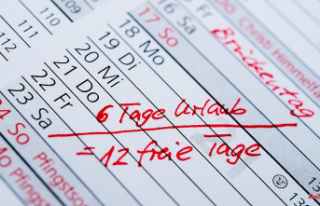Whether electrical items or the hotel room for the next vacation trip: Reviews from other customers are now among the most important criteria for a purchase decision. Stupid only if they are fake. With these tricks, you won't fall for it.
Reviews on the Internet are a good thing and make sense for end users and the competition in the market. But fake reviews destroy trust in the system. At the invitation of the travel rating and booking portal HolidayCheck, experts from business, consumer protection and politics recently dealt with this problem in detail in a panel. HolidayCheck has long been involved in the fight against fake reviews, even beyond the borders of the tourism industry.
It is not without reason that fake ratings are so relevant for customers and companies alike: According to the German Retail Association (HDE), ratings, together with personal recommendations from family and friends, are now more important than advertising for 61 percent of those surveyed. According to HolidayCheck, 71 percent of consumers rely on reviews of their holiday accommodation by other customers when making holiday decisions.
Accordingly, it is not only the users who wrongly trust them who suffer from false recommendations. Companies also lose a lot of money through complaints or returns from disappointed customers. The portals themselves therefore try to take action against the fakes with manual filters, automated filters and with the help of their users. But the customer also has ways of recognizing fake reviews. However, this requires a bit of finesse.
The following points - especially in combination - can indicate that these are fake reviews.
1. Many reviews in a short time
Unless it's hype like the latest iPhone, it's very noticeable when a product that's only just been released has a lot of reviews. Often these are then bought and evaluate the product accordingly positively.
2. Advertising language
The wording of the reviews can also provide clues. If only positive adjectives are to be read and the wording is more reminiscent of advertising than a personal experience, for example with many superlatives, caution is advised.
3. Texts sound similar or are duplicated
The reviews sound similar, did they use the same keywords or phrases? It is quite possible that someone has given several ratings for one and the same product and has always simply rewritten the same basic text to save time. Often the headings are also copied and only the texts are changed. Duplications are also a warning signal!
4. Reviewer's Profile
A look at the reviewer's profile is often very meaningful. Is the name credible, how do its other reviews sound?
5. Ratio of very good to very bad ratings
If a product has been rated mostly poorly, it is unbelievable if other customers are completely satisfied with it. It is realistic that some buyers also award 2, 3 or 4 out of a total of 5 stars.
6. Recommend competing products
However, there are also fakes under negative reviews - these then expressly recommend competing products. Real customers would rarely do that either.
7. No verified buyers
An important point, especially with expensive purchases, are the verified buyers. These can only be verified by the product portal itself and are therefore guaranteed to have tested the item themselves.
8. Sort or filter according to your needs
The standard view of real reviews often does not correspond to what is relevant for the user. It is therefore helpful to sort according to your own criteria, such as "latest reviews" or - where possible - to set a filter, for example based on the age of the reviewer or the reviewed travel period.
9. Page filters Amazon reviews
Another option, which so far has only been available for Amazon reviews, is the ReviewMeta page. There you enter the link to the Amazon product, the site filters out fake reviews according to several criteria and offers an adjusted rating that corresponds to the real experience of the product buyers.
10. No report button
In addition, the consumer can compare the ratings from different sites and consult test portals such as Stiftung Warentest. In addition, he or she should be careful when choosing the website: it should offer a report button for fake reviews and have its own review process. This shows that they are trying to protect their customers from this.
And so customers can also help to expose fake reviews publicly - by reporting them and having them checked. The market watchdog website, which is funded by the federal government, also helps with this. A complaint form is available there, as well as the heading "Participate - consumer appeals" to inform the market watchdogs about irregularities or abnormalities and to describe experiences.
6












